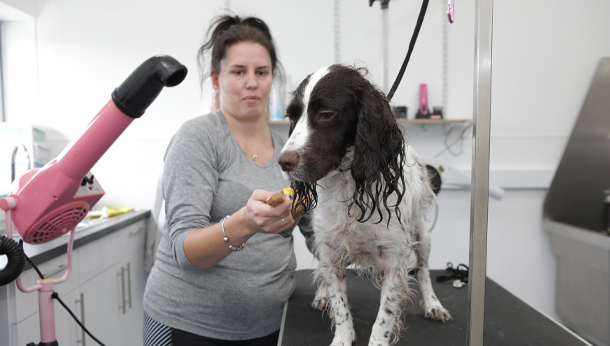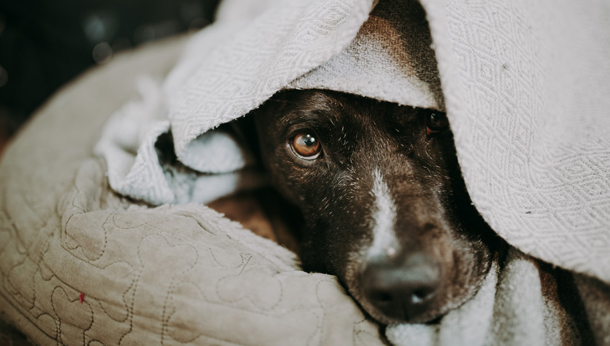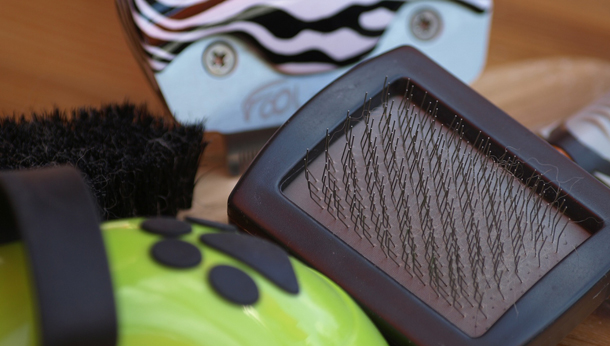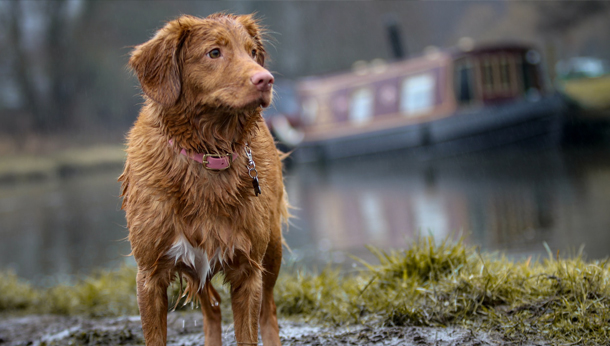Our Top Tips for Winter Cat and Dog Grooming
It is a common misconception that dogs and cats only need to be groomed in the warmer months. But, looking after your pets’ coat is equally, if not more important in the winter. This is because cold weather, rain, mud and central heating can all have a negative impact on your pet’s hair, and leave it looking dry, lack lustre and reduce its insulating qualities.
To bring your dog or cats fur back to its former summer glory, we’ve compiled a list of just some of the grooming you can do at home to ensure your pets’ fur remains healthy throughout the winter months.

Regular hair cuts
Many people think that you should let your pets’ hair grow over the winter to protect them from the cold. However, regular haircuts are important to keep hair at a manageable length and retain insulation properties. Without regular grooming and trims long haired breeds hair can become matted when wet, which can leave your pet prone to infection and cause discomfort against the skin. Matted hair will prevent your pet from retaining and regulating body temperature, meaning they can get cold.
Bathe and moisturise
If your dog becomes muddy or smelly after a winter walk, we recommend washing them in the bath or shower using warm water. Always use specialist dog shampoo as human products can cause irritations and sores. Just like us, pets’ skins can become dry as a result of central heating. Therefore, it is beneficial to use a moisturising shampoo and conditioner to restore the skin.
It’s important to ensure they are properly dried using a towel or hair dryer on the lowest heat before allowing them outside. Having wet hair in the cold can cause a drop in body temperature, particularly in short haired breeds, which could lead to more serious conditions.

Protect your pets’ paws
Dry your pets’ paws after returning from a walk and check the pads carefully. In the winter there can be grit or salt on the road, which can cause cuts and irritation. If you need to remove anything from the pads or between the toes, use warm water to rinse. Hair between your pets’ toes should be kept short to prevent them getting and then staying wet.
In the winter many pets spend less time outside and often go on shorter walks so you may need to clip their nails more regularly.

Gentle brushing
Regular brushing will help prevent the build-up of dirt and stop matts knots in your pets’ fur. Not only will this help prevent skin irritation but it can also reduce unpleasant smells, which can occur if your dog’s hair becomes matted and damp. Brushing will also help encourage natural oils, which will help keep their skin moisturised and coat shiny.

Flea control
Although fleas are less prevalent in the winter, you should ensure your pet is properly protected against parasites throughout the year. There are a number of methods you can use, including tablets, spot treatments and specialised collars. We recommend an all-in-one flea and worming tablet called Nexgard Spectra for dogs, which is available as part of our Pet Health Club. It is a very palatable beef-flavoured monthly tablet. For cats we recommend Credelio cat and milbemax for full protection. These are also available on our Pet Health Club.
Enlist professional help
Many owners like to groom their pets themselves, as it can provide quality time together. However, there are aspects of pet care such as nail clipping and maintaining hair between the toes, which some owners may not feel confident to do at home. At Dave Cumber Vets we have an experienced dog groomer based in our Weymouth practice, who is able to help with ongoing maintenance and trims.